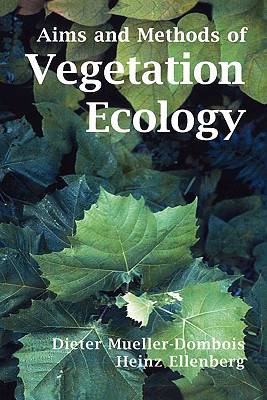
- Afhalen na 1 uur in een winkel met voorraad
- Gratis thuislevering in België vanaf € 30
- Ruim aanbod met 7 miljoen producten
- Afhalen na 1 uur in een winkel met voorraad
- Gratis thuislevering in België vanaf € 30
- Ruim aanbod met 7 miljoen producten
Zoeken
€ 101,95
+ 203 punten
Omschrijving
This book was written 30 years ago as the first synthesis of European and Anglo-American methods in vegetation ecology. Upon its publication in 1974, it rapidly became the standard text for the study of vegetation in over 60 US colleges and universities. An unsolicited review appeared in Ecology 56: 1233 (1975) with the title "Getting It All Together in Plant Synecology." The book also received wide international acceptance. "In his foreword to the 1974 edition, Raymond Fosberg referred to this book as 'by far the best work of its scope that I know.' It is still agreed that there is no comparable work. It was used as the only textbook for the first twenty offerings of one graduate course. For the past dozen years it's been moved to the recommended list because it has been out of print. There have been several vegetation science textbooks published since 1974, but their foci have been on ordination and multivariate data analysis instead of on sampling methods. No other text has covered the subject of vegetation sampling design in such depth, breadth, and impartiality as this book, Aims and Methods of Vegetation Ecology. Most of this material remains as current and topical today as it was a quarter of a century ago, because the progress that has been made in vegetation science is in the computer-based treatment of sample data, not in the creation of new sampling protocols. A new generation of vegetation ecologists can now have the same advantage - the same easy access to this classic reference work - that a past generation had in quantifying and summarizing the formidable complexity of natural, wildland vegetation." Foreword by Michael G. Barbour, Plant Ecologist, University of California at Davis, Department of Environmental Horticulture, November 2002.
Specificaties
Betrokkenen
- Auteur(s):
- Uitgeverij:
Inhoud
- Aantal bladzijden:
- 580
- Taal:
- Engels
Eigenschappen
- Productcode (EAN):
- 9781930665736
- Verschijningsdatum:
- 1/07/2003
- Uitvoering:
- Paperback
- Formaat:
- Trade paperback (VS)
- Afmetingen:
- 152 mm x 229 mm
- Gewicht:
- 766 g

Alleen bij Standaard Boekhandel
+ 203 punten op je klantenkaart van Standaard Boekhandel
Beoordelingen
We publiceren alleen reviews die voldoen aan de voorwaarden voor reviews. Bekijk onze voorwaarden voor reviews.











